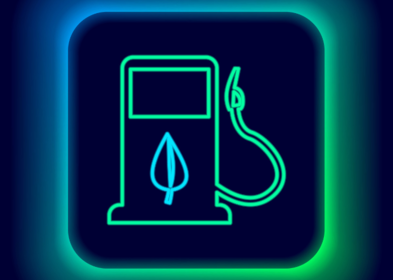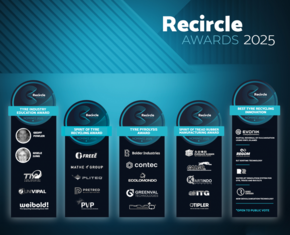
14/11/2022
Hydrogen and synthetic fuels: a viable alternative to electric power
Simonluca Pini – Contributor Editor of Il Sole 24 Ore
In the battle to reduce carbon dioxide emissions, synthetic fuels and hydrogen are two valid allies, as they are important alternatives to electric power
The current energy transition in Europe will remain in the history books because of the approach adopted. For the first time in the last 200 years, the winning technology was chosen by lawmakers and not by users. If the steam engines used in the industrial revolution, the internal combustion engine capable of replacing animal traction (and the first electric cars), the use of personal computers instead of typewriters and smartphones instead of traditional mobile phones are all bottom-up changes rather than top-down changes, with electric cars, this has not happened. The European Union decided unilaterally that internal combustion engines will be banned from 2035 to make way for electric motors powered by lithium-ion batteries or possibly alternative new technologies.
E-Fuels and the hydrogen alternative
Will we be saying goodbye to petrol stations and just have charging points in the next few years? Probably not, given the research into synthetic fuels and the use of hydrogen to power fuel cells. Manufacturers are working to find an alternative to all-electric mobility, looking for a solution that can be used until 2035 and even beyond so that internal combustion engines do not disappear completely. Synthetic e-fuels (petrol not derived from the distillation of crude oil) have multiple advantages. They will make it possible to reduce carbon dioxide emissions in combustion engines, they are easy to store, can be distributed through the existing network and do not necessitate a significant increase in industrial costs. Furthermore, they can be easily used in already existing engines, as is confirmed by various motorcycle manufacturers. With relatively simple and low industrial impact modifications, synthetic fuels can be used on units that were not originally designed for this type of fuel. Another added value comes from hydrogen, a solution capable of ensuring a good mileage autonomy with the time spent at the pump only slightly higher than that need to fill up diesel and petrol vehicles.
The EU is among those who believe in the future of hydrogen cars (and also in hydrogen powered light commercial vehicles, trucks and buses). Indeed, in October 2022, the European Parliament approved the text of the AFIR (Alternative Fuels Infrastructure Regulation) legislation with a large majority. The text also sets a very ambitious objective for the development of hydrogen.
According to EU plans, the target of one hydrogen refuelling station every 100 kilometres has to be reached by 2027. This target only takes into account the main roads (by traffic volumes) in the EU. It is anyway a target that is well beyond the current Italian situation as well as that of many other EU countries. In the space of five years, therefore, considerable investments will be needed to create a physical hydrogen refuelling network.
On paper it would be an excellent idea, capable of reducing pollution caused by cars with a simple "signature", unfortunately in reality it is proving to be much more complex and potentially disastrous for hundreds of thousands of jobs.
Besides having put China at a clear advantage, beginning with its near-monopoly in terms of the battery production sector and the mines from where the raw materials needed for the production of electric cars are extracted, it has also dictated the technology to be used. Now, however, many issues are coming to the surface and we are starting to understand how other routes have to be followed in order to achieve climate neutrality, from the use of biofuels to hydrogen engines capable of travelling 1000 km on a full tank.
E-Fuels and the hydrogen alternative
Will we be saying goodbye to petrol stations and just have charging points in the next few years? Probably not, given the research into synthetic fuels and the use of hydrogen to power fuel cells. Manufacturers are working to find an alternative to all-electric mobility, looking for a solution that can be used until 2035 and even beyond so that internal combustion engines do not disappear completely. Synthetic e-fuels (petrol not derived from the distillation of crude oil) have multiple advantages. They will make it possible to reduce carbon dioxide emissions in combustion engines, they are easy to store, can be distributed through the existing network and do not necessitate a significant increase in industrial costs. Furthermore, they can be easily used in already existing engines, as is confirmed by various motorcycle manufacturers. With relatively simple and low industrial impact modifications, synthetic fuels can be used on units that were not originally designed for this type of fuel. Another added value comes from hydrogen, a solution capable of ensuring a good mileage autonomy with the time spent at the pump only slightly higher than that need to fill up diesel and petrol vehicles.
The EU is among those who believe in the future of hydrogen cars (and also in hydrogen powered light commercial vehicles, trucks and buses). Indeed, in October 2022, the European Parliament approved the text of the AFIR (Alternative Fuels Infrastructure Regulation) legislation with a large majority. The text also sets a very ambitious objective for the development of hydrogen.
According to EU plans, the target of one hydrogen refuelling station every 100 kilometres has to be reached by 2027. This target only takes into account the main roads (by traffic volumes) in the EU. It is anyway a target that is well beyond the current Italian situation as well as that of many other EU countries. In the space of five years, therefore, considerable investments will be needed to create a physical hydrogen refuelling network.
On paper it would be an excellent idea, capable of reducing pollution caused by cars with a simple "signature", unfortunately in reality it is proving to be much more complex and potentially disastrous for hundreds of thousands of jobs.
Besides having put China at a clear advantage, beginning with its near-monopoly in terms of the battery production sector and the mines from where the raw materials needed for the production of electric cars are extracted, it has also dictated the technology to be used. Now, however, many issues are coming to the surface and we are starting to understand how other routes have to be followed in order to achieve climate neutrality, from the use of biofuels to hydrogen engines capable of travelling 1000 km on a full tank.






